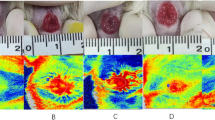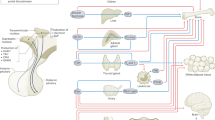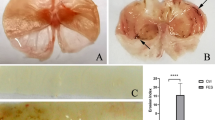Abstract
IT has been shown (Dodds, Noble and Smith1, Dodds and Noble2) that it is possible to prepare an extract of the posterior lobe of the pituitary gland which, when injected subcutaneously or intravenously into animals, will cause an intensive hæmorrhagic lesion of the acid-bearing area of the stomach, from which the animals usually recover completely. Chronic ulcers may also be produced.
This is a preview of subscription content, access via your institution
Access options
Subscribe to this journal
Receive 51 print issues and online access
$199.00 per year
only $3.90 per issue
Buy this article
- Purchase on SpringerLink
- Instant access to full article PDF
Prices may be subject to local taxes which are calculated during checkout
Similar content being viewed by others
References
Dodds, E. C., Noble, R. L., and Smith, E. R., Lancet, 2, 918; 1934.
Dodds, E. C., Noble, R. L., J. Soc. Chem. Ind., 52; 1934. Chemistry and Industry, p. 1026.
Author information
Authors and Affiliations
Rights and permissions
About this article
Cite this article
DODDS, E., NOBLE, R. Relation of the Posterior Lobe of the Pituitary Gland to Anæmia and to Blood Formation. Nature 135, 788 (1935). https://doi.org/10.1038/135788a0
Issue date:
DOI: https://doi.org/10.1038/135788a0
This article is cited by
-
Pituitrin Anæmia
Nature (1939)
-
A modern conception of gastric secretory functions
American Journal of Digestive Diseases (1938)



